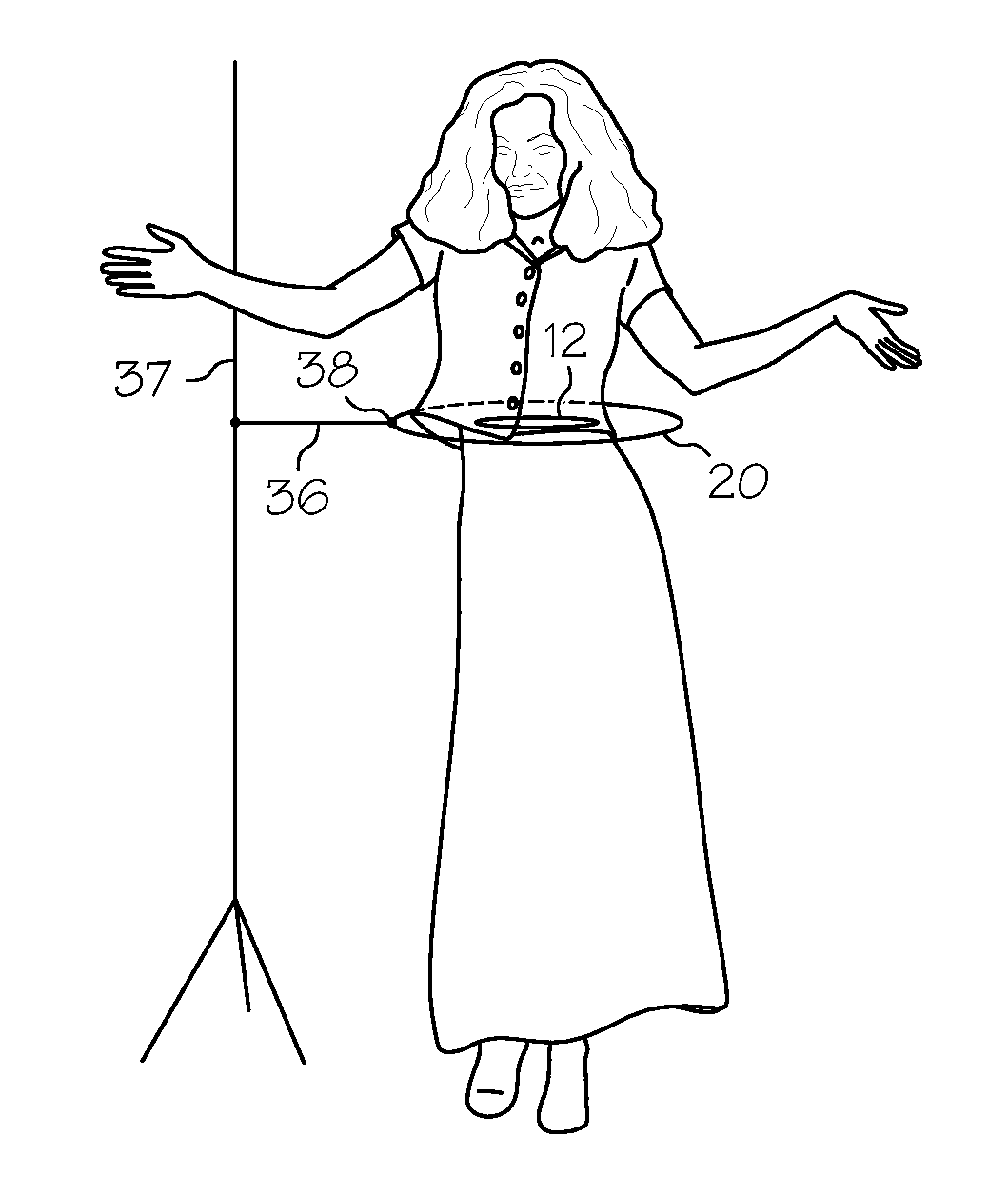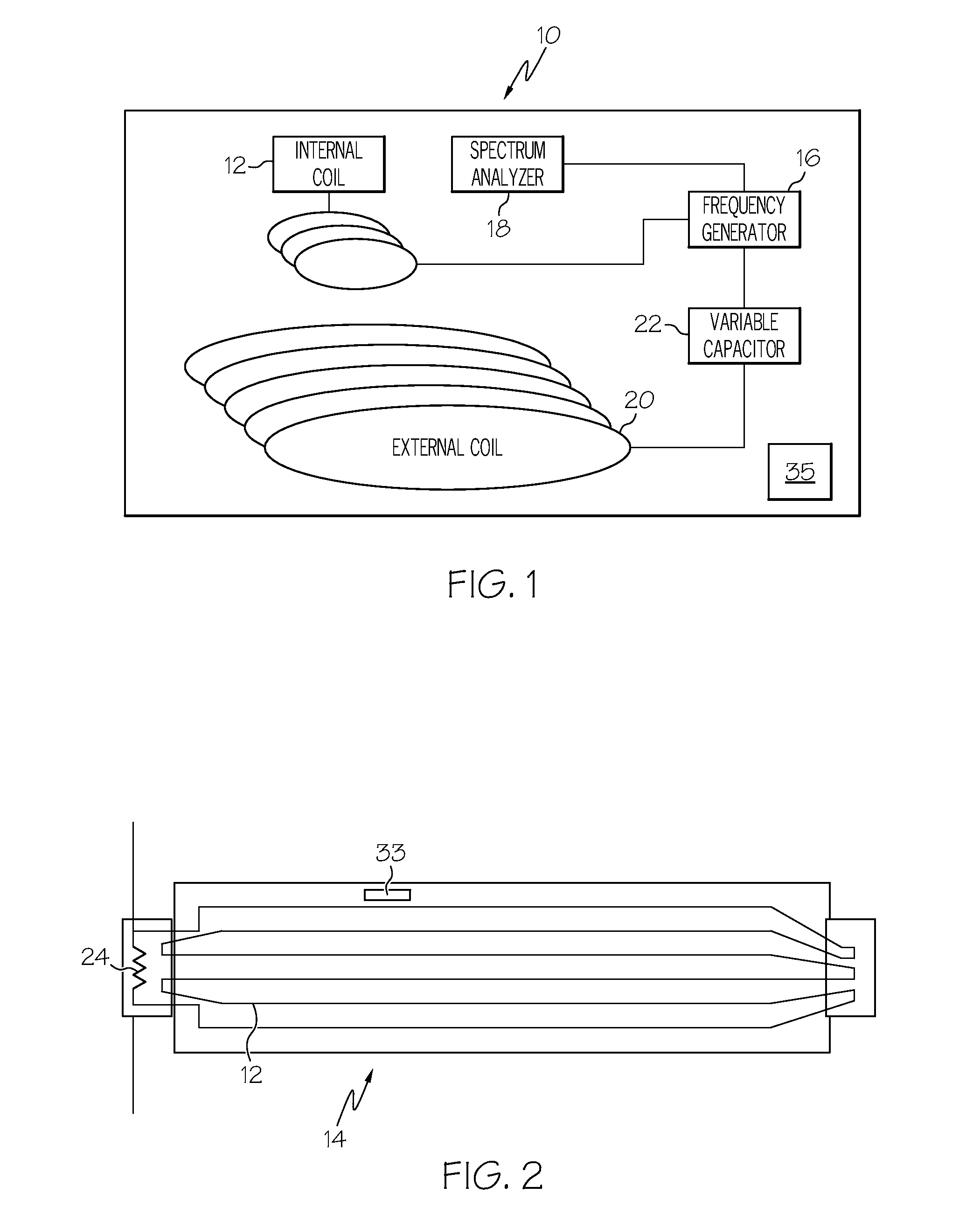Device for Monitoring Size of Luminal Cavity
a luminal cavity and device technology, applied in the field of adjustable gastric bands, can solve the problems of limiting career advancement and higher education opportunities, denying employment, and limiting the possibility of career advancement and higher education
- Summary
- Abstract
- Description
- Claims
- Application Information
AI Technical Summary
Problems solved by technology
Method used
Image
Examples
first embodiment
[0049]Two embodiments of the present invention utilize induction to calculate the area of a gastric lumen. The first embodiment using induction to be considered is when the inner coil and the outer coil are placed concentrically and coaxially relative one another, as shown schematically in FIG. 4A. Such an embodiment occurs when the external coil is placed around the patient's body such that the inner coil in the LAGB is concentric with the external coil. The number of turns N of each solenoid is equal to the number of turns per unit length (n) * the length (d) of the solenoid. So, the number of turns of the outer solenoid in FIG. 4 is given by the equation N1=n1*d1.
[0050]It is assumed that the external coil is excited with the following current:
I=I0 sin ωt, (1)
where ω=the angular frequency of the current source and I0 is the maximum current of the current source. Then, the magnetic field B for a relatively long coil is given by the relation:
B=μ·N1I0·sin(ω·t) / d1, (2)
where N1 is ...
second embodiment
[0053]The second embodiment using induction to be considered is when the inner coil 12 and the outer coil 20 are placed in a coaxial non-concentric arrangement relative to one another, as shown schematically in FIG. 4B. There is an impedance Z, shown at 21, between the coils. Such an embodiment occurs when the external coil is placed underneath or above, rather than around, the patient's body.
[0054]As stated earlier, the values of L1, L2, and M depend on the geometry of the coils. With the geometry of the second embodiment, namely of two coaxial non-concentric coils, L1, L2, and M are as follows:
M=μN1N2A1A2 / 2π(R12+z2)3 / 2, (44)
and
L1=N12·A1·μ / d1, (45)
and
L2=N22·A2·μ / d2 (46)
Based on equations (44)-(46) for M, L1, L2,
M2 / (L1·L2)=μ2N21N22A12A22d1d2 / 41π2(R12+z2)3N12N22A1A2μ2=A1A2d1d2 / 4π2(R12+z2)3 (47)
Substituting into equation (36) results in
ωno_lap_band2ωlap_band2=1L·CL2C·(L1·L2-M2)=(L1·L2-M2)(L1·L2)=1-A1A2d1d24π2(R12+z2)3(48)
Solving for the area A2 of the inner coil results in
A2=(...
PUM
 Login to View More
Login to View More Abstract
Description
Claims
Application Information
 Login to View More
Login to View More - R&D
- Intellectual Property
- Life Sciences
- Materials
- Tech Scout
- Unparalleled Data Quality
- Higher Quality Content
- 60% Fewer Hallucinations
Browse by: Latest US Patents, China's latest patents, Technical Efficacy Thesaurus, Application Domain, Technology Topic, Popular Technical Reports.
© 2025 PatSnap. All rights reserved.Legal|Privacy policy|Modern Slavery Act Transparency Statement|Sitemap|About US| Contact US: help@patsnap.com



